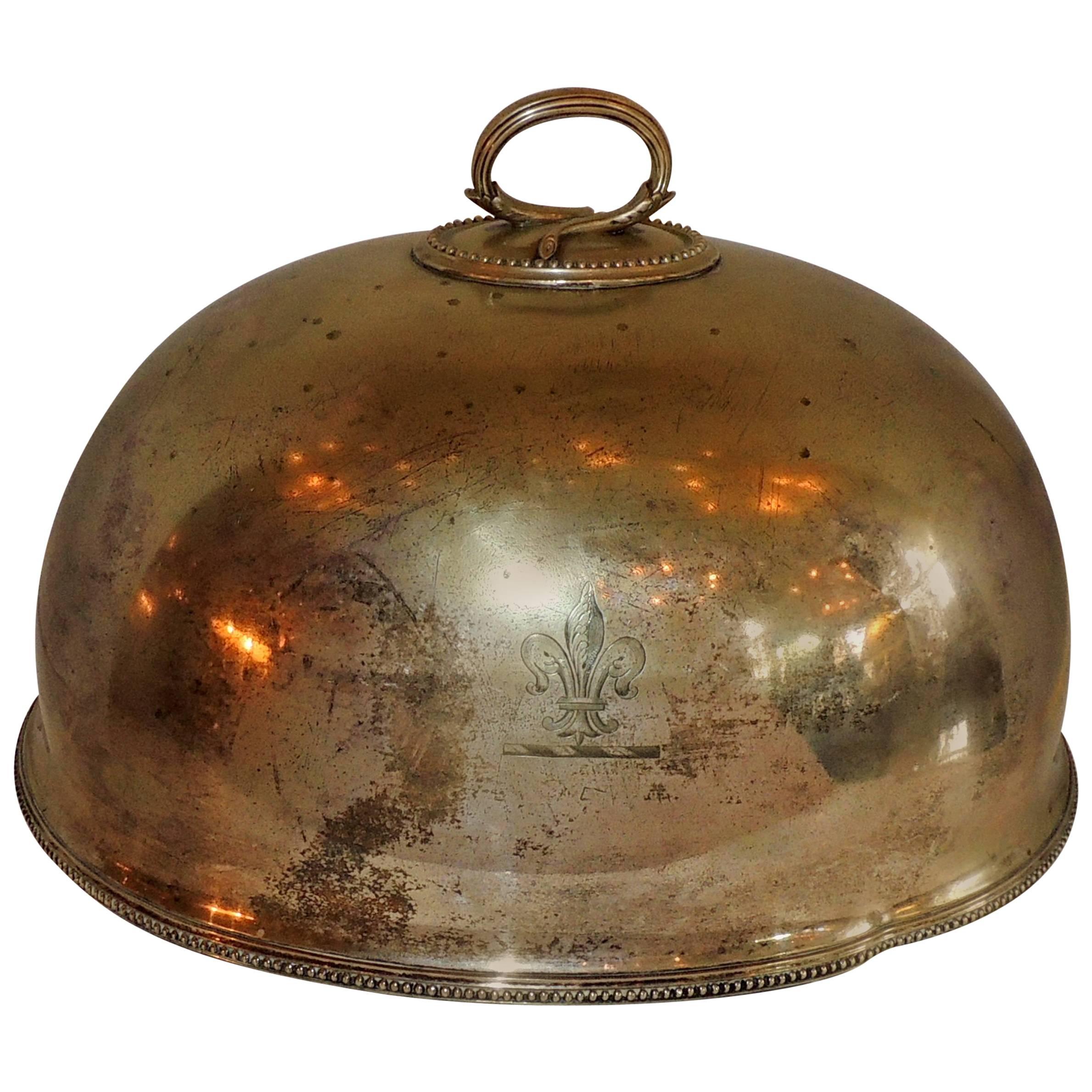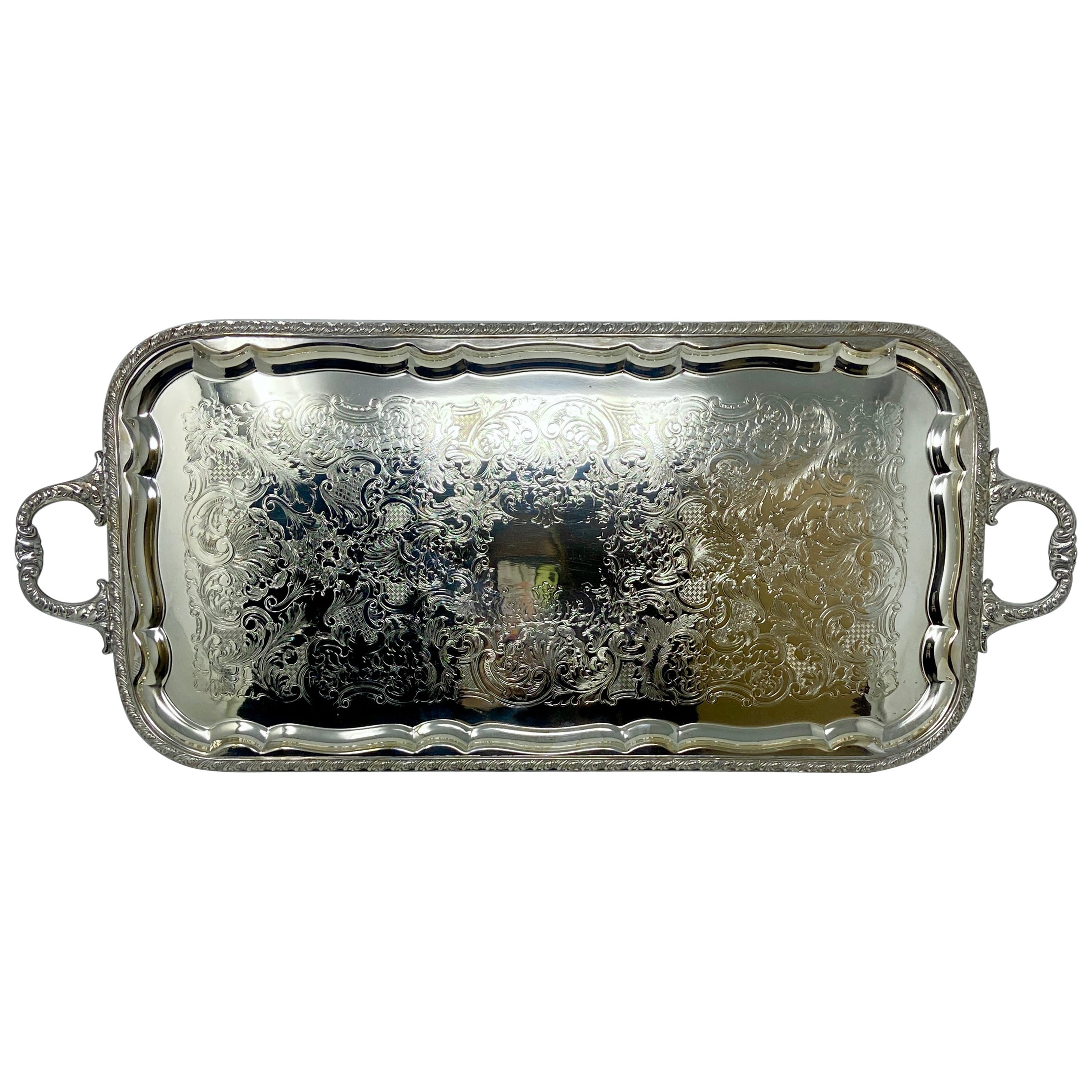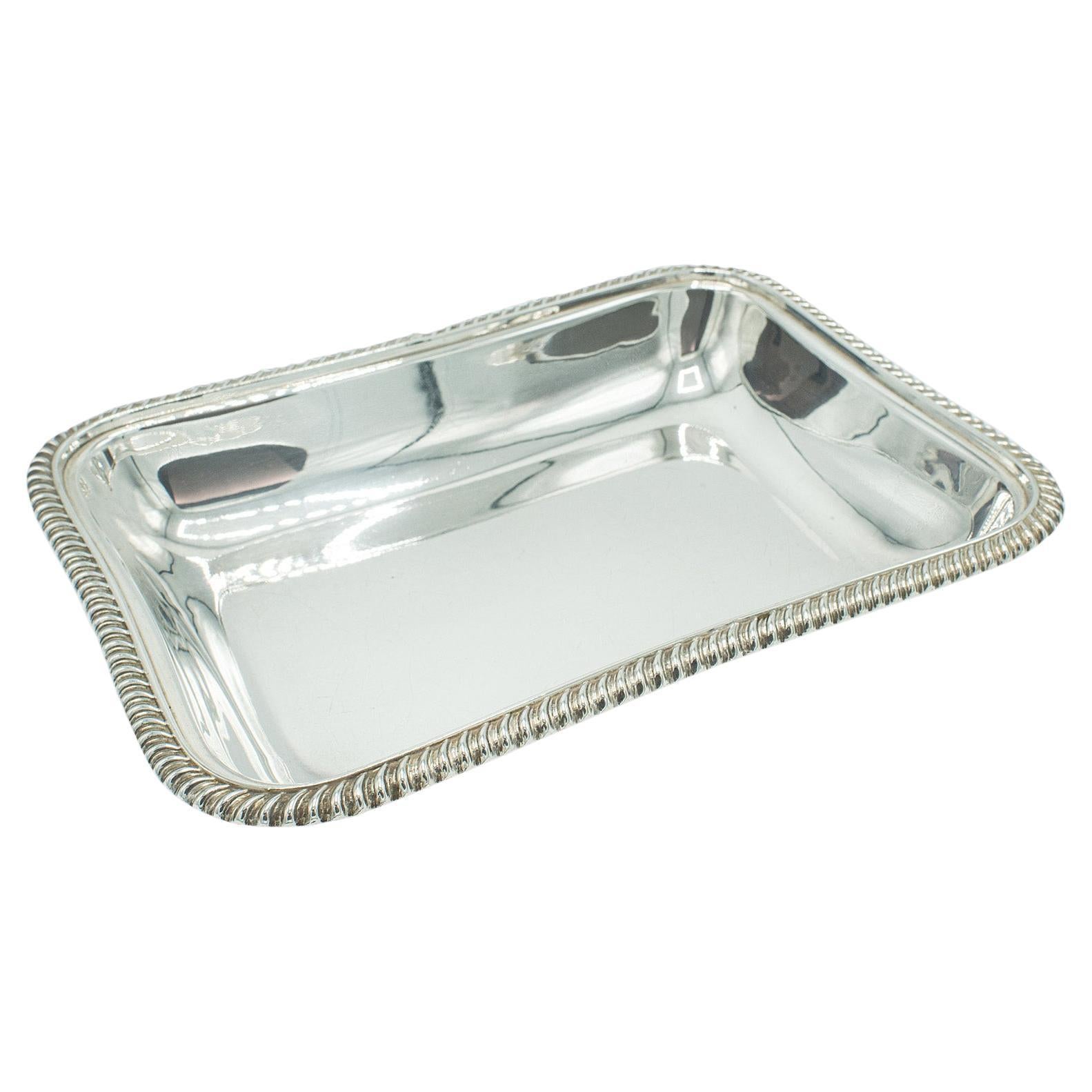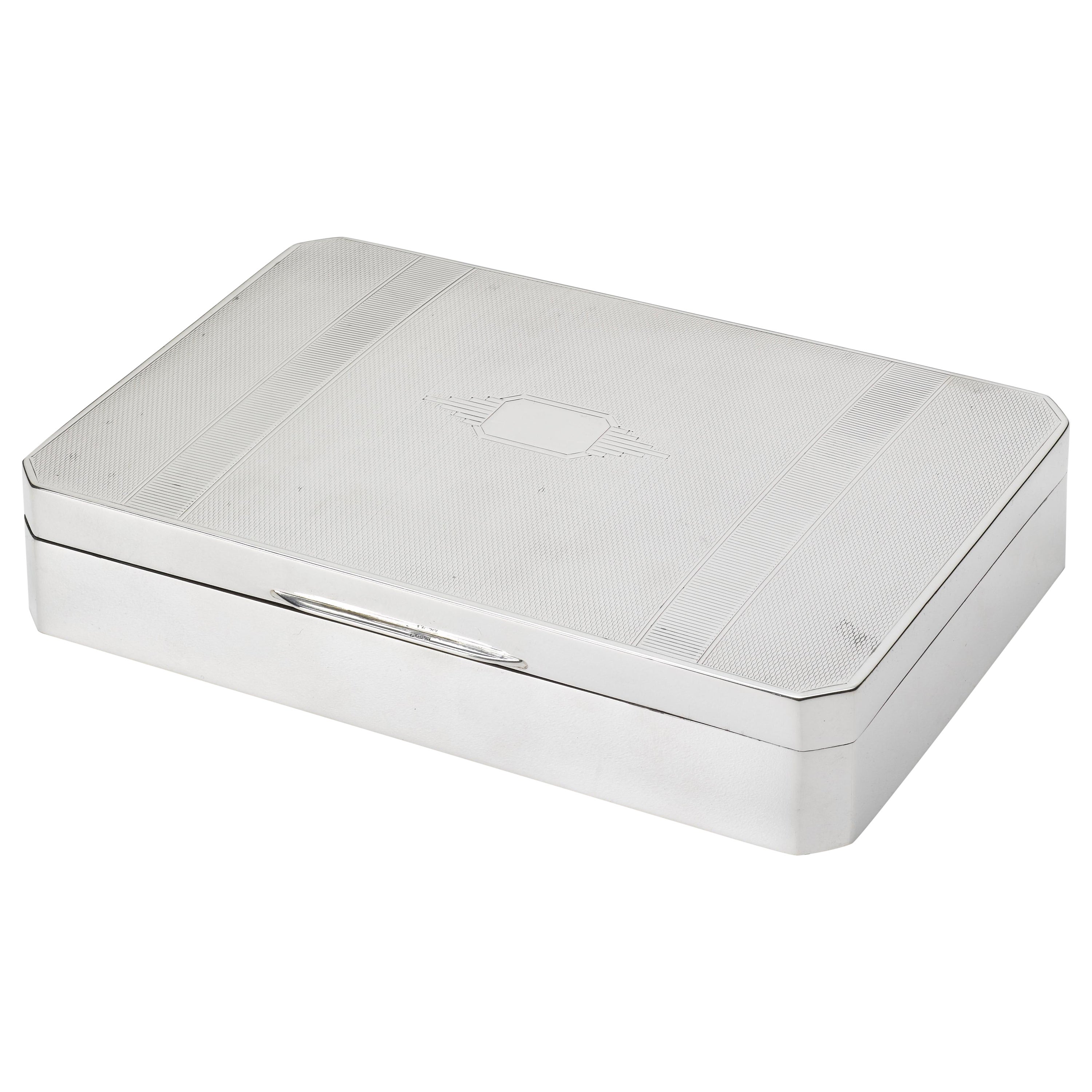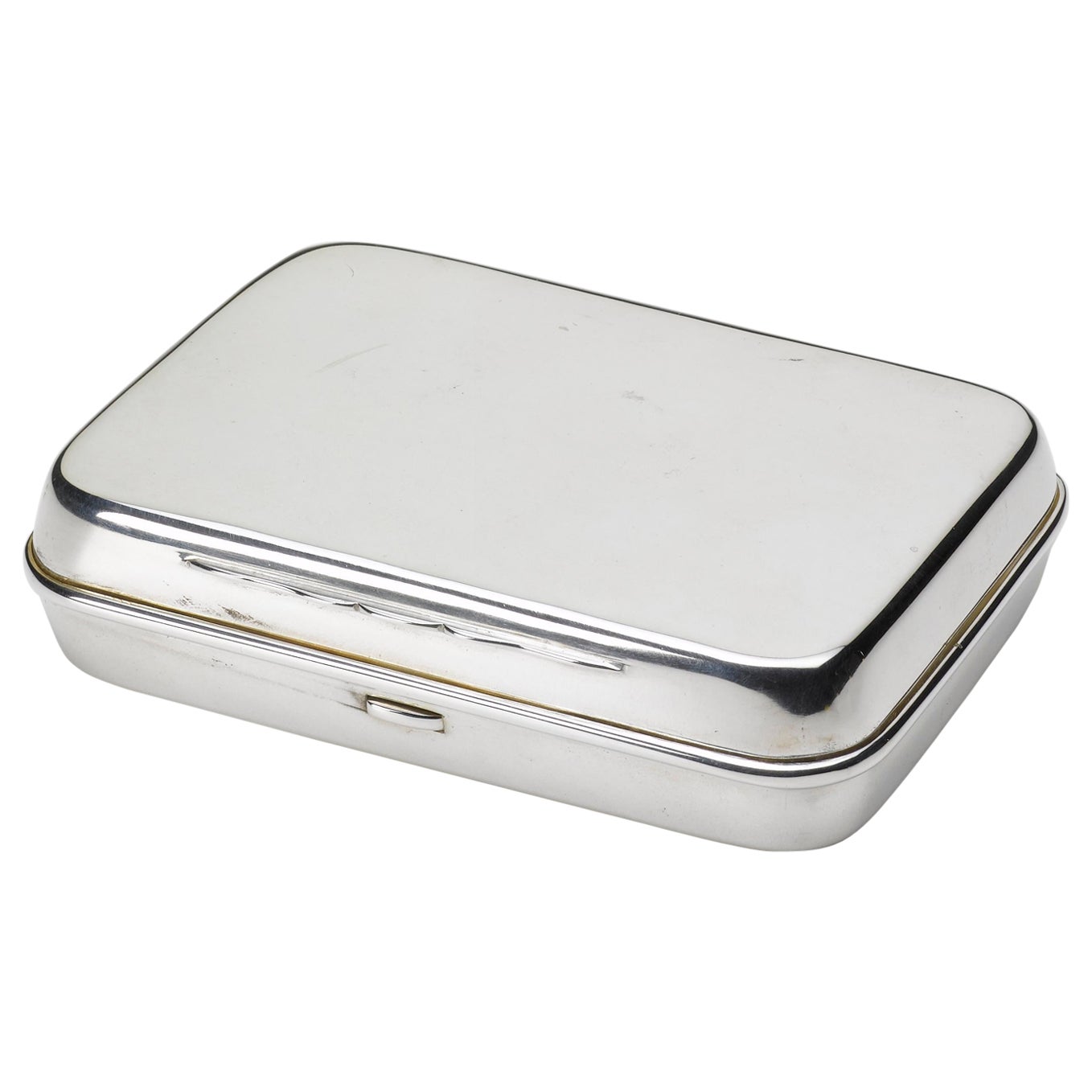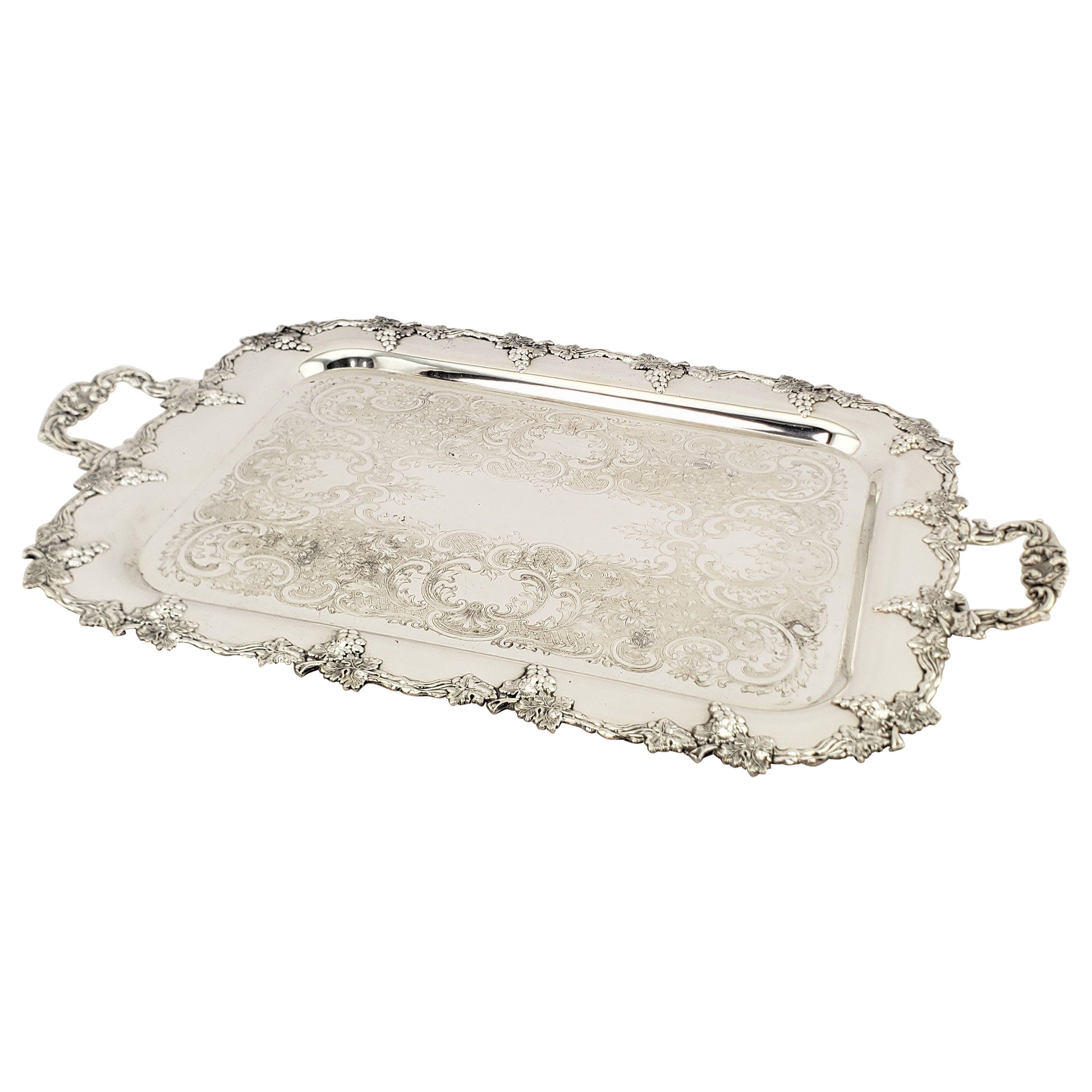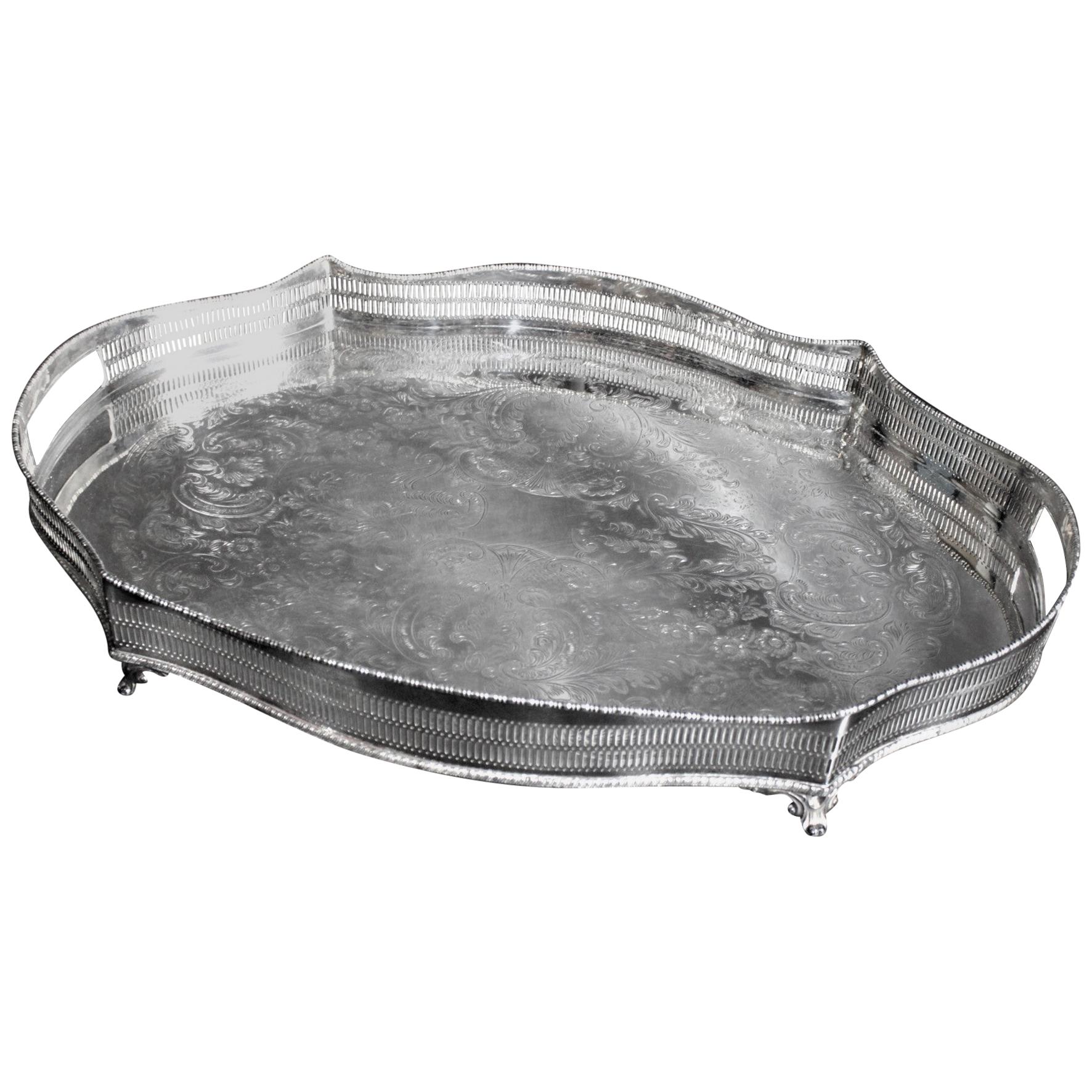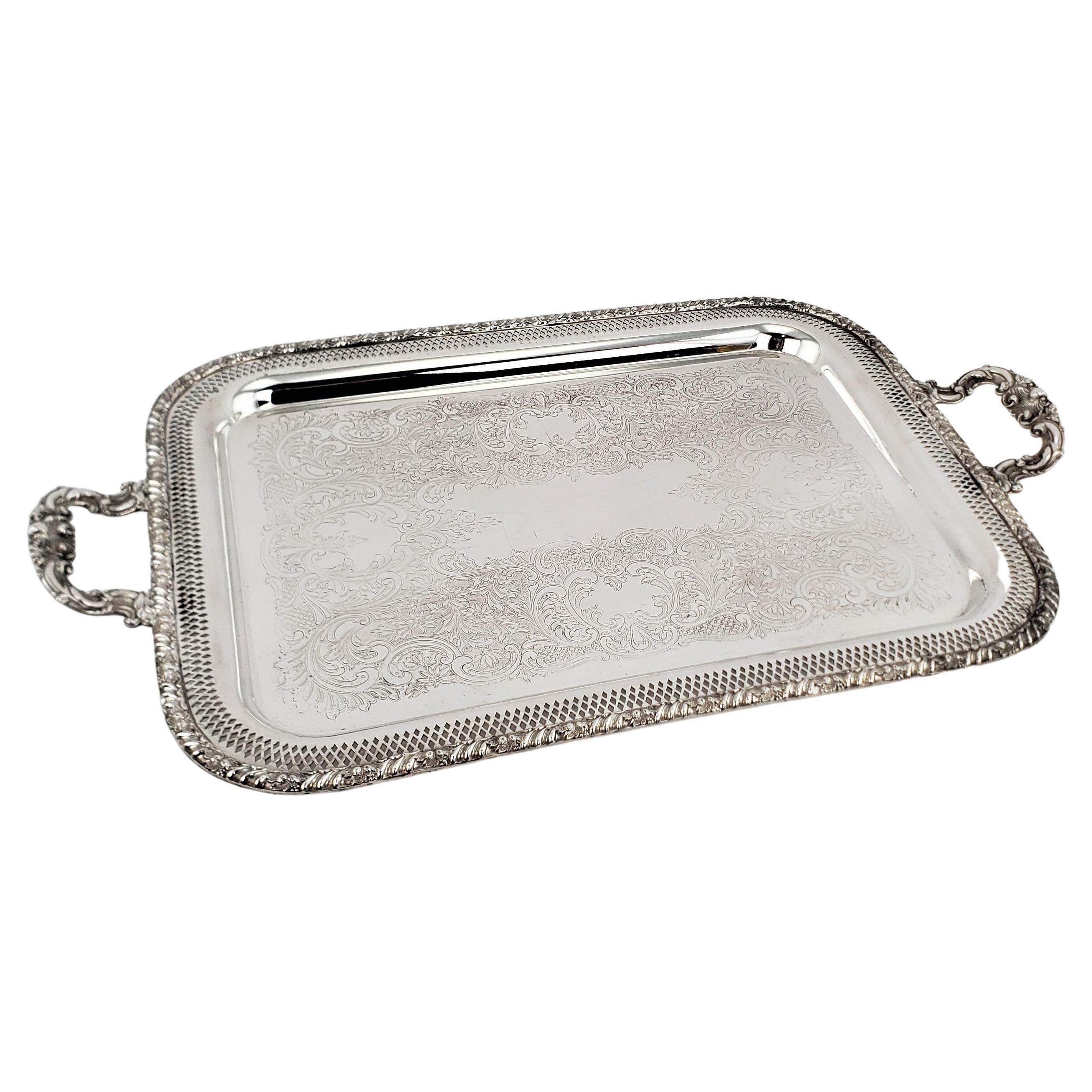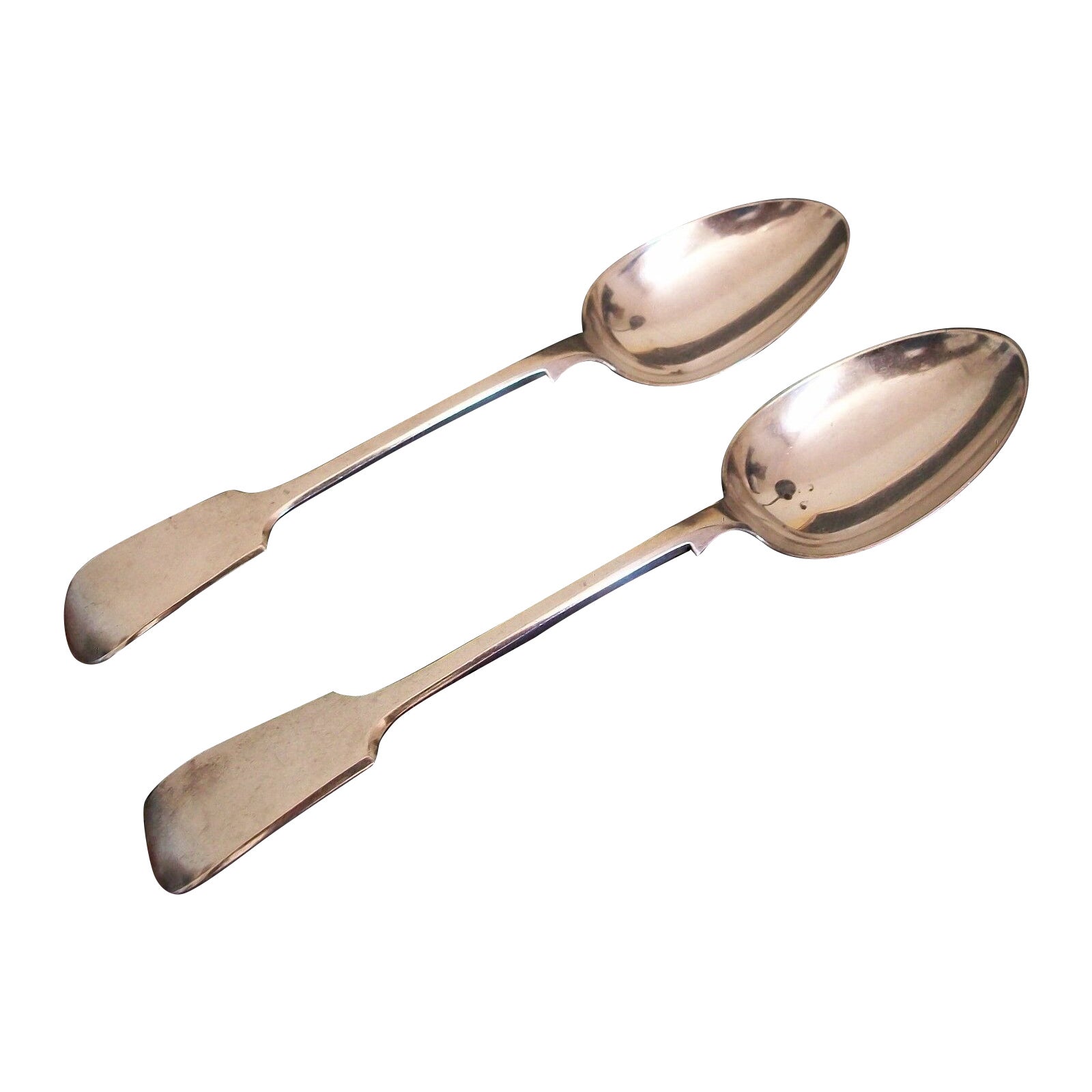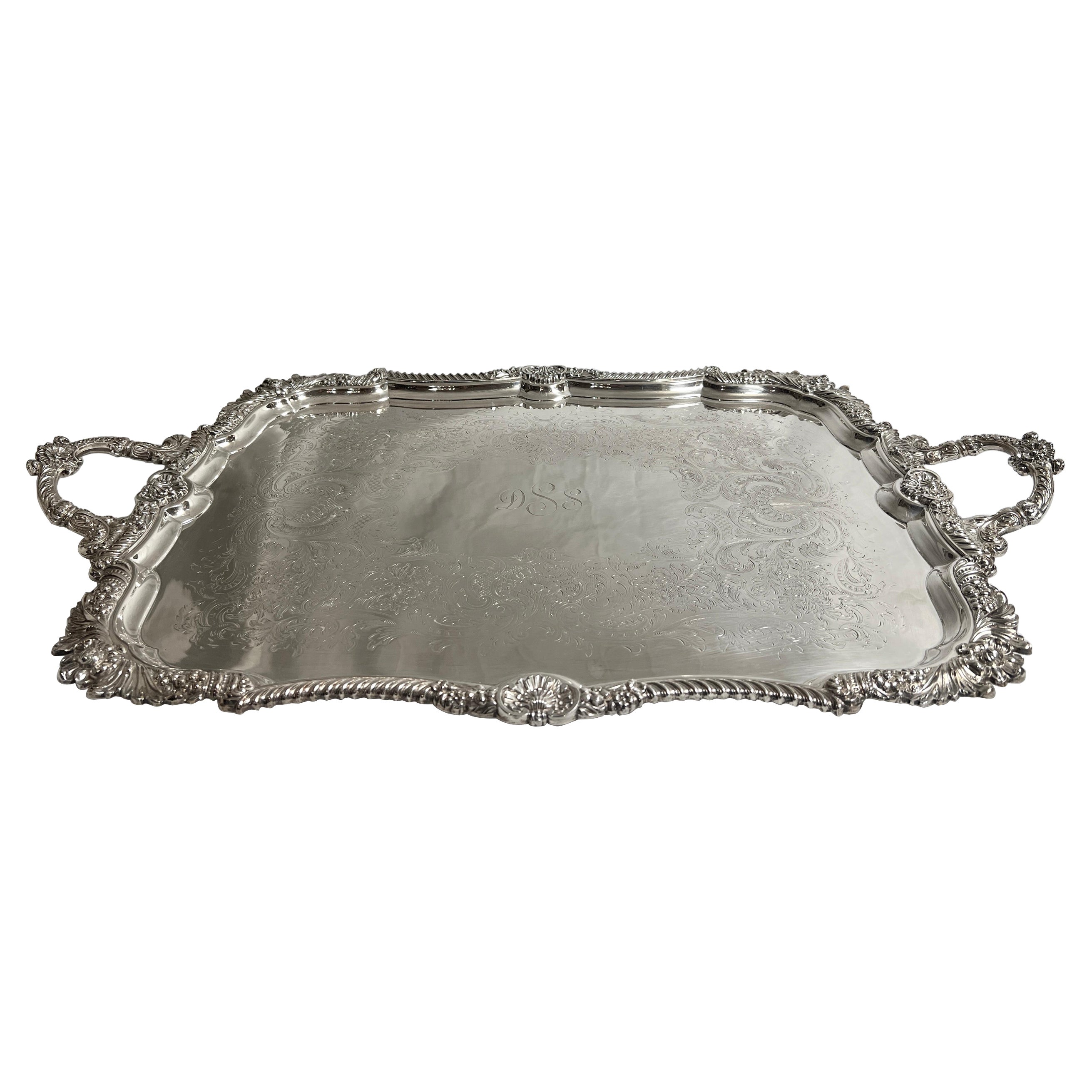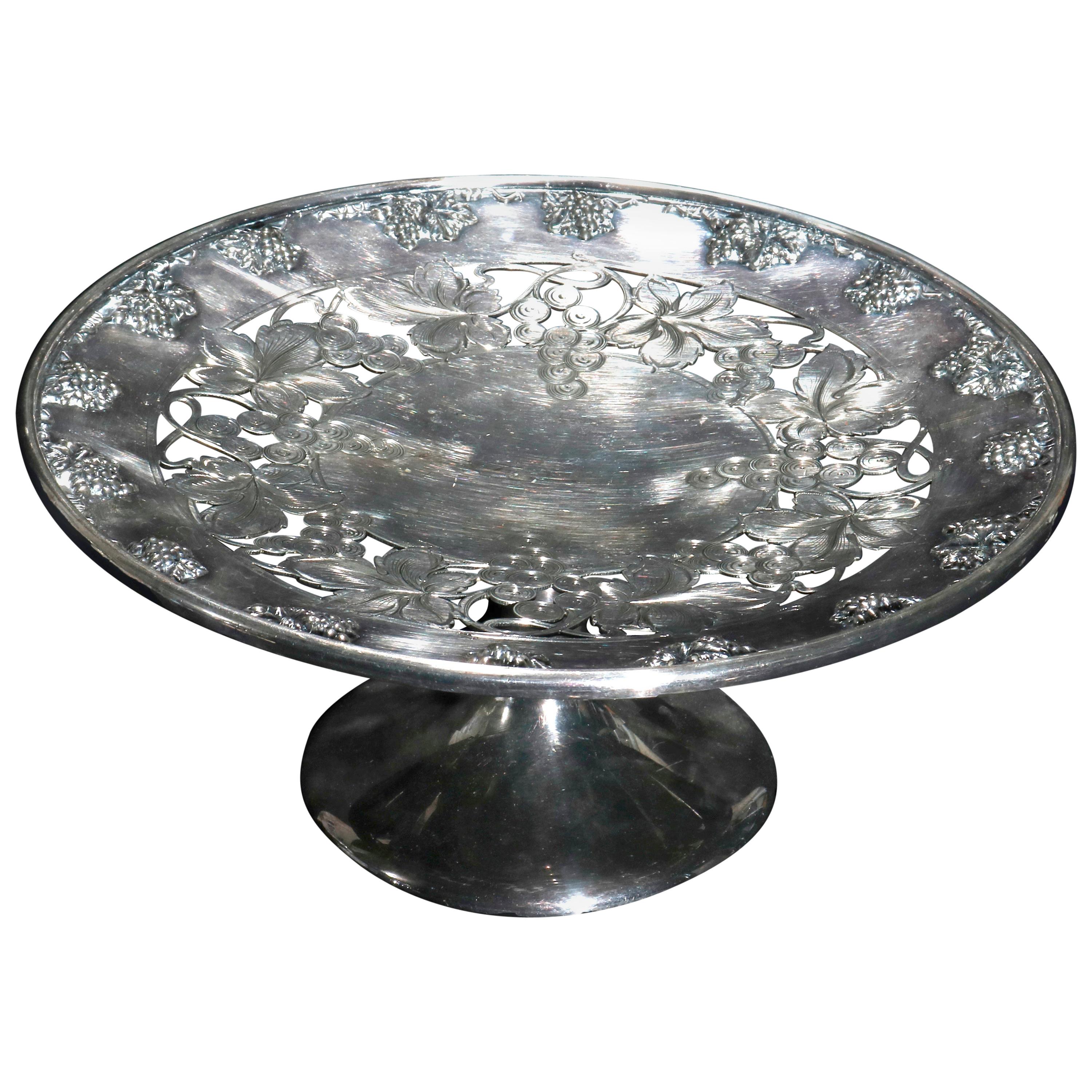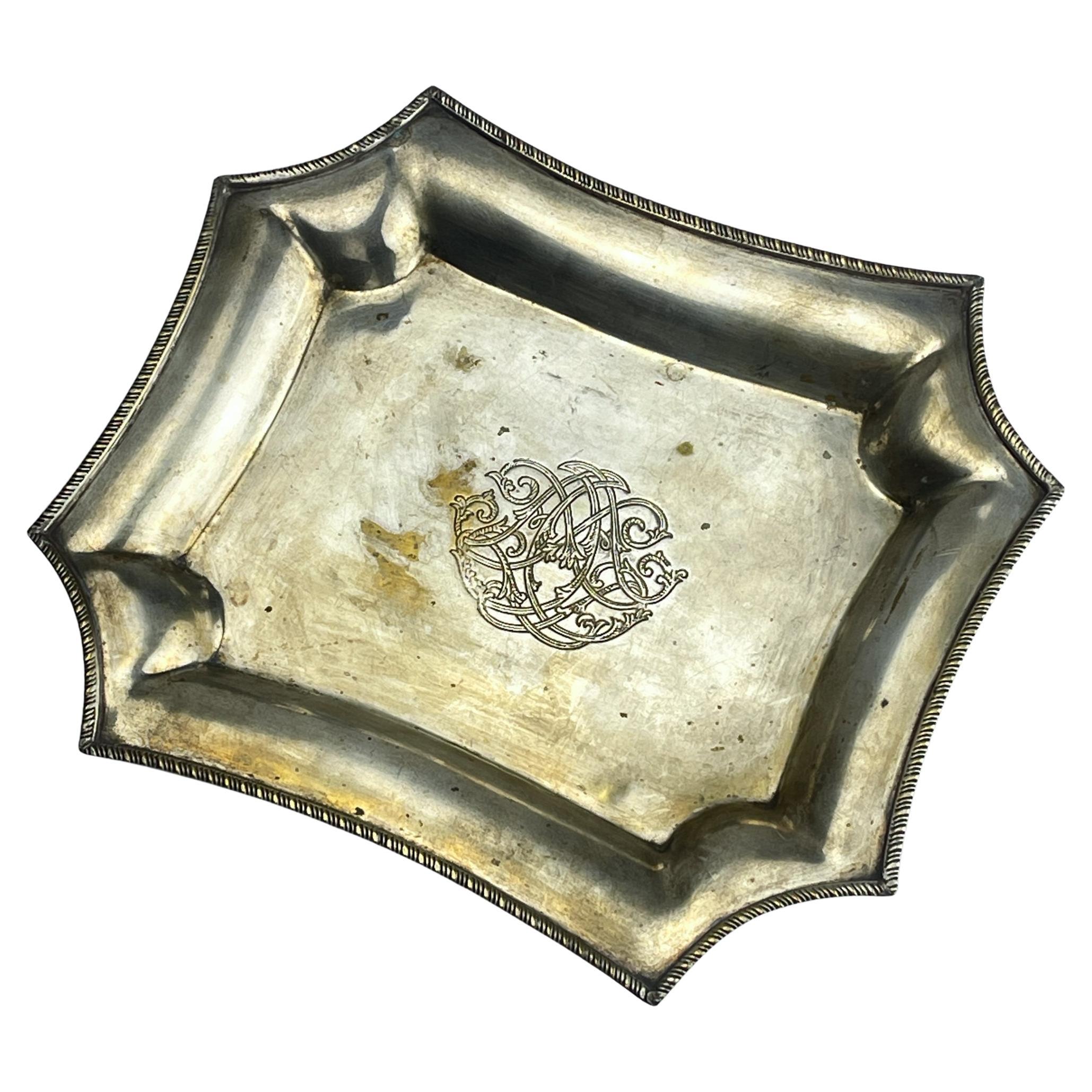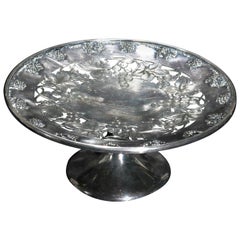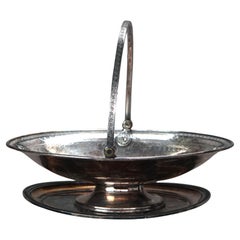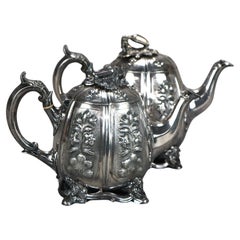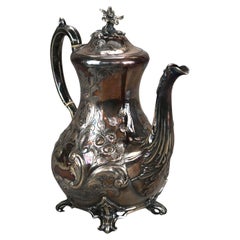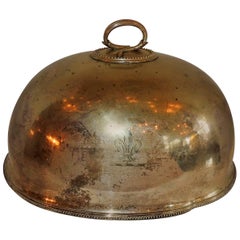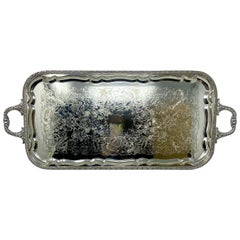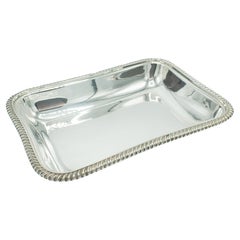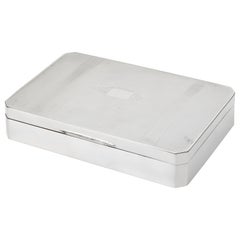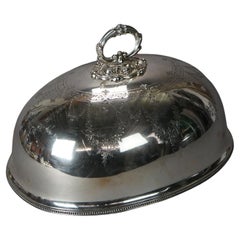
Antique Victorian Sheffield Silver Plate Serving Cloche circa 1900
View Similar Items
Want more images or videos?
Request additional images or videos from the seller
1 of 13
Antique Victorian Sheffield Silver Plate Serving Cloche circa 1900
About the Item
- Dimensions:Height: 12 in (30.48 cm)Width: 14.5 in (36.83 cm)Depth: 12 in (30.48 cm)
- Materials and Techniques:
- Period:
- Date of Manufacture:circa 1900
- Condition:Wear consistent with age and use. Overall very good condition with heat marks; as photographed.
- Seller Location:Big Flats, NY
- Reference Number:Seller: 759741stDibs: LU2396334592192
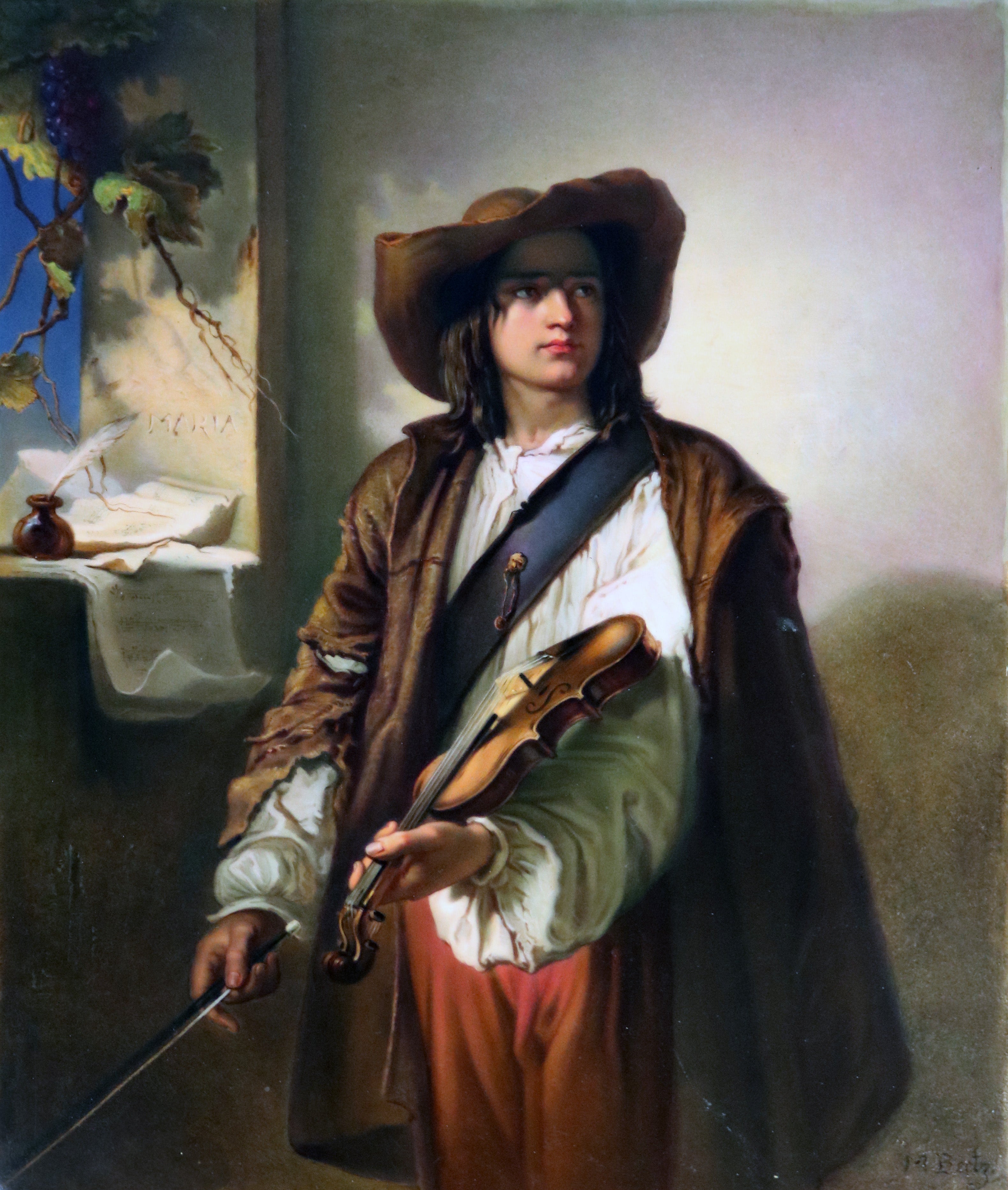
About the Seller
4.8
Gold Seller
Premium sellers maintaining a 4.3+ rating and 24-hour response times
1stDibs seller since 2016
2,681 sales on 1stDibs
Typical response time: 9 hours
Authenticity Guarantee
In the unlikely event there’s an issue with an item’s authenticity, contact us within 1 year for a full refund. DetailsMoney-Back Guarantee
If your item is not as described, is damaged in transit, or does not arrive, contact us within 7 days for a full refund. Details24-Hour Cancellation
You have a 24-hour grace period in which to reconsider your purchase, with no questions asked.Vetted Professional Sellers
Our world-class sellers must adhere to strict standards for service and quality, maintaining the integrity of our listings.Price-Match Guarantee
If you find that a seller listed the same item for a lower price elsewhere, we’ll match it.Trusted Global Delivery
Our best-in-class carrier network provides specialized shipping options worldwide, including custom delivery.More From This Seller
View AllAntique Victorian Reticulated Silver Plate Grape & Leaf Compote, circa 1900
Located in Big Flats, NY
An antique Victorian silver plate compote offers bowl with reticulated rim having grape and leaf pattern, circa 1900
Measures: 5.5" H x 12.25" W.
Catalogue Note: Ask about DISCOUNT...
Category
20th Century Victorian Sheffield and Silverplate
Materials
Silver Plate
$360 Sale Price
20% Off
Two Antique Silver Plate Serving Pieces, Basket & Platter C1890
Located in Big Flats, NY
Two Antique Silver Plate Serving Pieces, Basket & Platter C1890
Tray - 10" x 7 5/8" x 5/8"
Basket - 10" x 12" x 9 1/4"
Category
Antique Late 19th Century Sheffield and Silverplate
Materials
Silver Plate
$280 Sale Price / set
20% Off
Two Antique English Sheffield Silver Plated Tea Pots with Garden Elements C1890
By Sheffield
Located in Big Flats, NY
Two Antique English Sheffield Silver Plated Tea Pots with Garden Elements including Embossed Flowers, Vegetable Finials, and Leaves, C1890
Measures - taller 7.25"h x 10.25"w x 5.25"...
Category
Antique Late 19th Century English Sheffield and Silverplate
Materials
Silver Plate
$360 Sale Price / set
20% Off
Antique Footed James Dixon And Sons Sheffield Silver Plated Tea Pot C1890
Located in Big Flats, NY
Antique Footed James Dixon And Sons Sheffield Silver Plated Tea Pot with Foliate Engraving and Floral Finial C1890
Measures - 10.25"H x 5.5"W x 9.5"D
Category
Antique 19th Century Sheffield and Silverplate
Materials
Silver Plate
$280 Sale Price
20% Off
Six Piece Antique Victorian Silver Plate Tea Set C1890
Located in Big Flats, NY
Six Piece Antique Victorian Silver Plate Tea Set C1890
Tray - 23 1/2" x 14 1/2" x 2 1/4"
Bucket With Bent Rim - 6 1/4" x 5 7/8" x 5 7/8"
Small Pitcher - 7 5/8" x 5 1/4" x 3 5/8"
Cov...
Category
Antique Late 19th Century Sheffield and Silverplate
Materials
Silver Plate
$760 Sale Price / set
20% Off
Antique Silver Plated Teapot C1890
Located in Big Flats, NY
Antique Silver Plated Teapot with Foliate Engraving and Fruit Finial C1890
Measures - 11.25"H x 5.25"W x 8.75"D
Category
Antique 19th Century Sheffield and Silverplate
Materials
Silver Plate
$280 Sale Price
20% Off
You May Also Like
Antique Serving Silver Plated Meat Food Turkey Dome Cover Victorian Cloche Large
By Sheffield Mfg. Co 1
Located in Roslyn, NY
A wonderful silver plated extra large antique serving meat food turkey dome / cover, in the Victorian style, finished with a wonderful fleur de lis crest o...
Category
Antique Early 1900s English Victorian Sheffield and Silverplate
Materials
Silver Plate
Antique English Sheffield Silver-Plate Rectangular Serving Tray
Located in New Orleans, LA
Antique English Sheffield silver-plate rectangular serving tray.
Category
Antique 19th Century English Sheffield and Silverplate
Materials
Sheffield Plate
Antique Bonbon Dish, English, Silver Plate, Serving, Fruit Tray, Victorian, 1900
Located in Hele, Devon, GB
This is an antique bonbon dish. An English silver plated serving or fruit tray, dating to the late Victorian period, circa 1900.
Attractive dish, ideal ...
Category
Antique Late 19th Century British Sheffield and Silverplate
Materials
Silver Plate
Hallmarked Silver Plated Keepsake Box, Sheffield, UK, circa 1900
Located in Colorado Springs, CO
Offered is a stunning silver plated keepsake box dating to 1900, with associated hallmark. This small box includes a wooden interior with two slots and a blank square on top where initials could have been engraved. A well maintained, elegant piece, this antique silver box is an excellent addition to any silver or home decor collection.
Trinket or keepsake boxes have taken on many forms since their first conception in ancient times. However their purpose remains the same; to store jewelry and other items precious to the owner. Originally, these boxes were used specifically for jewelry. These were in common use as early as 5000 BC in Ancient Egypt, when the majority of Egyptians, both male and female, wore jewelry. Boxes were used to keep these gemstone encrusted items safe. In Ancient Rome, jewelry was a status symbol. Rings and brooches were utilized to represent ones status in society. Again, boxes were needed for security and storage purposes. Finding early examples of these are quite rare.
Victorian and Edwardian examples of trinket boxes are far more common. This is because owning jewellery was a luxury until the Victorian era- let alone possessing so much a box was needed to store it all. Fine jewelry and other items became available to the masses after the industrial revolution due to the reduction in production costs. This led to a demand for trinket boxes, which were much smaller than jewelry boxes and therefore better suited to the needs of the middle class who did not yet possess an abundance of jewelry.
In Victorian households, collectables and other items of interested were also stashed inside these boxes. This is why they are known as trinket or keepsake boxes, rather than just jewelry boxes, although of course jewelry was also stored in them. Trinket boxes were produced in large numbers around this time. Many were lined with colored plush or velvet or rich wood. More elaborate designs had interior divisions and trays for rings and other pieces of jewellery. It was also common to see trinket boxes so small that they could only contain one item, such as a single ring. Ornate exteriors were created to reflect the value of the trinket boxes contents.
The Edwardian era saw the introduction of new styles of trinket box. These included small circular or oblong boxes...
Category
Antique Early 1900s English Art Deco Decorative Boxes
Materials
Silver
$600 Sale Price
20% Off
Hallmarked Silver Plated Keepsake Box, Sheffield, Uk, Circa 1900
Located in Colorado Springs, CO
Offered is a stunning Sheffield silver keepsake box dating to 1900, with associated hallmark. This small box includes a clean interior and rounded corners. The box is free of names or initials, but would have been used to house keepsakes such as jewelry or cufflinks. A well maintained, elegant piece, this antique silver box is an excellent addition to any silver collection.
Trinket or keepsake boxes have taken on many forms since their first conception in ancient times. However their purpose remains the same; to store jewelry and other items precious to the owner. Originally, these boxes were used specifically for jewelry. These were in common use as early as 5000 BC in Ancient Egypt, when the majority of Egyptians, both male and female, wore jewelry. Boxes were used to keep these gemstone encrusted items safe. In Ancient Rome, jewelry was a status symbol. Rings and brooches were utilized to represent ones status in society. Again, boxes were needed for security and storage purposes. Finding early examples of these are quite rare.
Victorian and Edwardian examples of trinket boxes are far more common. This is because owning jewellery was a luxury until the Victorian era- let alone possessing so much a box was needed to store it all. Fine jewelry and other items became available to the masses after the industrial revolution due to the reduction in production costs. This led to a demand for trinket boxes, which were much smaller than jewelry boxes and therefore better suited to the needs of the middle class who did not yet possess an abundance of jewelry.
In Victorian households, collectables and other items of interested were also stashed inside these boxes. This is why they are known as trinket or keepsake boxes, rather than just jewelry boxes, although of course jewelry was also stored in them. Trinket boxes were produced in large numbers around this time. Many were lined with colored plush or velvet or rich wood. More elaborate designs had interior divisions and trays for rings and other pieces of jewellery. It was also common to see trinket boxes so small that they could only contain one item, such as a single ring. Ornate exteriors were created to reflect the value of the trinket boxes contents.
The Edwardian era saw the introduction of new styles of trinket box. These included small circular or oblong boxes...
Category
Antique Early 1900s British Art Deco Decorative Boxes
Materials
Silver
Antique Sheffield Reproduction Silver Plated Serving Tray with Grapes & Leaves
Located in Hamilton, Ontario
This antique serving tray was made by an unkwown maker and presumed to have originated from England and date to approximately 1920 and done in a Victorian style. The tray is done in silver plate and has applied grape and leaf decoration around the outer edges with ornate stylized scrollwork and flowers engraved on the top. The tray is clearly signed "Sheffield Reproduction...
Category
Early 20th Century English Victorian Sheffield and Silverplate
Materials
Silver Plate
Recently Viewed
View AllMore Ways To Browse
Split Horn Headdress
Spode Tower
Spool Bed Queen
Spool Bed Spindle Bed
Spratling Jaguar
Sprite Chairs
Sputnik Atomic Coffee Table
Squiggle Wallpaper
Squirrel Nut Cracker
St Croix Bed
St Timothy Chair
Staande Klok
Staffordshire Cobbler
Staffordshire Disraeli
Staffordshire Dog Bank
Staffordshire Giraffe
Staffordshire Leopard
Staffordshire Lion Lamb
